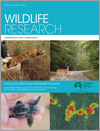
Wildlife Research
Volume 47 Numbers 7 & 8 2020
Cat Ecology, Impacts and Management in Australia
WR19174We need to worry about Bella and Charlie: the impacts of pet cats on Australian wildlife
 , John C. Z. Woinarski
, John C. Z. Woinarski  , Chris R. Dickman, Brett P. Murphy, Leigh-Ann Woolley
, Chris R. Dickman, Brett P. Murphy, Leigh-Ann Woolley  and Mike C. Calver
and Mike C. Calver
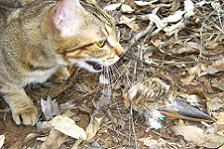
Feral cats have had devastating impacts on Australian wildlife; here, we review the impacts of pet cats. We collated studies of predation by pet cats, finding that predation tolls per square kilometre on native species in residential areas are much higher than the predation tolls by feral cats in natural environments. We discuss the management options and challenges for reducing these impacts. Photograph by Joanne Heathcote.
WR19174 Abstract | WR19174 Full Text | WR19174PDF (480 KB) | WR19174Supplementary Material (2.7 MB) Open Access Article
WR19041Variation in Toxoplasma gondii seroprevalence: effects of site, sex, species and behaviour between insular and mainland macropods
 , Bronwyn A. Fancourt
, Bronwyn A. Fancourt  , David Peacock
, David Peacock  , Charles G. B. Caraguel and Milton M. McAllister
, Charles G. B. Caraguel and Milton M. McAllister
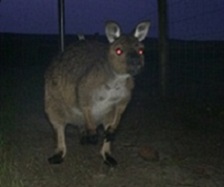
Toxoplasma gondii, a cat-borne parasite, causes both acute and latent disease in a range of wildlife species, and macropods are particularly susceptible. We investigated T. gondii seroprevalence in culled and road-killed macropods, and showed a higher seroprevalence on Kangaroo Island than on the South Australian mainland and in female kangaroos than in wallabies, but no difference in seroprevalence between kangaroos and wallabies, road-killed and culled animals, or male and female wallabies. We suggest that the higher T. gondii seroprevalence on the island relative to the mainland is a consequence of the island’s higher cat abundance. Photograph by Patrick Taggart.
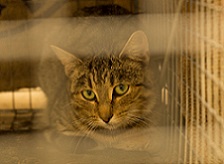
To protect biodiversity, feral cat baiting programs are being increasingly implemented across Australia. We examined the impacts of ‘Eradicat’ feral cat baiting on non-target species native to Kangaroo Island, using a non-toxic bait trail. We found that non-target uptake was high, particularly by common brushtail possums (Trichosurus vulpecula) and bush rats (Rattus fuscipes)), and, therefore, potentially other feral cat baits may be more appropriate for this area. Photograph by Rosemary Hohnen.
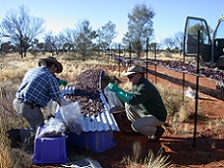
Reliable survey methods are needed to detect both predators and prey so as to understand the ecological consequences of predator management. The present study explored the effectiveness of camera-trap designs before and after a feral cat control event and found that placement of cameras on roads were important for showing non-target impacts to dingoes and macropodids. Lethal control of invasive mesopredators should be approached cautiously so as to avoid potential unintended negative ecological consequences. Photograph by Western Australian Department of Biodiversity, Conservation and Attractions.
WR19153Long-term benefits and short-term costs: small vertebrate responses to predator exclusion and native mammal reintroductions in south-western New South Wales, Australia
 , Felicity L Hotellier, Andrew Carter
, Felicity L Hotellier, Andrew Carter  , Leah Kemp, Joanne Potts, Matt W. Hayward and Sarah M. Legge
, Leah Kemp, Joanne Potts, Matt W. Hayward and Sarah M. Legge 
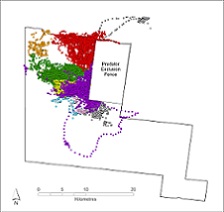
Conservation fences are used increasingly in Australia to facilitate the re-introduction of regionally extinct mammals that are vulnerable to cat and fox predation. This 10-year study measured the effects of conservation fences on in situ reptiles and small mammals, and showed that they deliver benefits to some (but not all) species of these fauna. Map by Andrew Carter.
WR19182Predation by introduced cats Felis catus on Australian frogs: compilation of species records and estimation of numbers killed
 , S. M. Legge
, S. M. Legge  , L. A. Woolley
, L. A. Woolley  , R. Palmer, C. R. Dickman, J. Augusteyn, T. S. Doherty, G. Edwards
, R. Palmer, C. R. Dickman, J. Augusteyn, T. S. Doherty, G. Edwards  , H. Geyle
, H. Geyle  , H. McGregor
, H. McGregor  , J. Riley, J. Turpin and B. P. Murphy
, J. Riley, J. Turpin and B. P. Murphy 
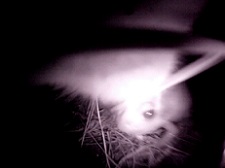
Cats have a significant detrimental impact on the Australian reptile, bird and mammal faunas, but no previous studies have examined the extent of cat predation on Australian frogs. We estimated that cats in Australia kill ~93 million frogs per year, and compiled records of cat predation on 30 Australian frog species. However, this extent of predation is notably less than that by cats on reptiles, birds and mammals. Photograph by A. Cat (colour-mounted camera), courtesy of Hugh McGregor.
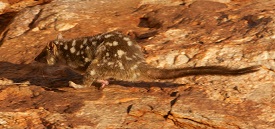
Feral cats are an important threat to arid-zone mammals in Australia, and aerial baiting with the poison bait Eradicat® is becoming a common practice to manage these predators. The present study aims to assess the susceptibility of non-target northern quolls to Eradicat® baits, which, until recently, has remained untested under field conditions. Our results suggested that broadscale baiting using Eradicat® is unlikely to affect northern quoll survival in the wild, and validated the serious impacts of feral cats, and wild dogs, on northern quolls. Photograph by Judy Dunlop.
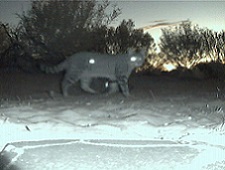
Feral cats pose a risk to Australian wildlife and are difficult to control using conventional techniques. We field-tested a new method for the control of feral cats (Felixer grooming trap) that relies on poison ingestion through grooming. Felixer traps were highly target specific and reduced the cat population by two-thirds in 6 weeks, suggesting that they are an effective tool for cat control. Photograph by Katherine Moseby.
WR19197Introduced cats eating a continental fauna: invertebrate consumption by feral cats (Felis catus) in Australia
 , Brett P. Murphy, Hayley M. Geyle
, Brett P. Murphy, Hayley M. Geyle  , Sarah M. Legge
, Sarah M. Legge  , Russell A. Palmer, Chris R. Dickman, Tim S. Doherty, Glenn P. Edwards
, Russell A. Palmer, Chris R. Dickman, Tim S. Doherty, Glenn P. Edwards  , Joanna Riley, Jeff M. Turpin and John C. Z. Woinarski
, Joanna Riley, Jeff M. Turpin and John C. Z. Woinarski 
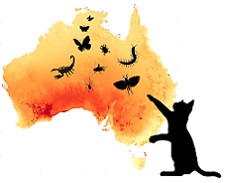
Insect decline across the globe calls for urgent attention to conservation impacts from potential threats. Feral cats consume substantial numbers of Australian birds, reptiles and mammals, but their consumption of invertebrates and potential impacts on this group have not previously been estimated. We found that feral cats consume more than 1 billion invertebrates per year in Australia, with the highest take in arid and semi-arid areas. The number of invertebrates eaten by cats is greater than the number of mammals eaten, but being much smaller in body size, invertebrates contribute a substantially smaller proportion of dietary biomass. The impacts of feral cats on invertebrates are difficult to assess, owing to the lack of abundance and distribution estimates for invertebrates across Australia. Image by Leigh-Ann Woolley.
WR19198Feral cats are more abundant under severe disturbance regimes in an Australian tropical savanna
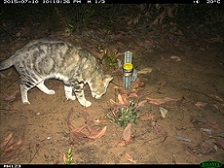
The factors controlling the distribution and abundance of feral cats in northern Australia are poorly understood. We examined patterns of cat activity and abundance across Melville Island and found that they were highest in areas characterised by frequent severe fires and high feral herbivore activity. Management to reduce the frequency of severe fires and feral herbivore abundance may help suppress cat populations in this region. Photograph by Hugh Davies.
WR19202Living with the enemy: a threatened prey species coexisting with feral cats on a fox-free island

Feral domestic cats have contributed to a substantial loss of Australian wildlife, but management of their impacts remains challenging. The present study aimed to examine how a population of long-nosed potoroos is coexisting with feral cats and showed that a ‘moderate’ cat density, temporal avoidance and predation-risk minimisation, and refuge availability are likely to be important. This information may facilitate better conservation actions, including potential species reintroductions, in the extensive areas currently occupied by feral cats. Photograph taken by motion sensor camera (Zoos Victoria).
WR19172Topographic complexity potentially mediates cat predation risk for a critically endangered rodent
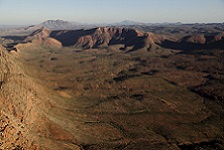
We sought to determine whether cat detectability and density were lower in a rugged refuge for the central rock-rat, than in an adjacent valley with flatter terrain. Cat detection probability and possibly density were lower in the refuge, suggesting that terrain complexity mediates cat predation risk. In total, 17% of cats were detected in both habitat types. Cat management programs must include the refuge and surrounding habitats to control cats that pose a threat to central rock-rats. Photograph by Peter J. McDonald.
WR19201Distribution and diet of feral cats (Felis catus) in the Wet Tropics of north-eastern Australia, with a focus on the upland rainforest
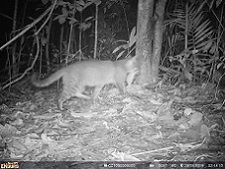
Feral cats have been identified as a key threat to Australia’s biodiversity, yet little is known about their presence, abundance and potential impacts in rainforest. The present study assessed the distribution and diet of feral cats (Felis catus) in the Wet Tropics, focusing on upland rainforest. Occurrence records suggest that cats are widespread through rainforest habitats; however, camera-trapping data suggest that abundance is highly variable across sites. Scat analysis suggests that rainforest cats are primarily feeding on small mammals. Further research is required to assess determinants of cat density, how cats are using rainforest, and their impacts on upland rainforest communities. Photograph by Tim Hughes (South Endeavour Trust).
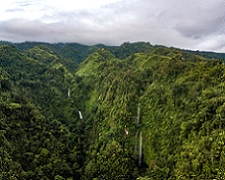
Feral cats are a major cause of extinction globally (especially on islands), but few data are available from rainforests or the south-western Pacific. Using camera traps, our study aimed to estimate densities of feral cats, and abundances and activity patterns of cats and sympatric birds and mammals in tropical island rainforests. Feral cats were the most commonly detected species and our results suggest that introduced rodents are important for influencing cat abundance, activity and impacts. Photograph by Patrick Pikacha.
WR19137Pre-eradication assessment of feral cat density and population size across Kangaroo Island, South Australia
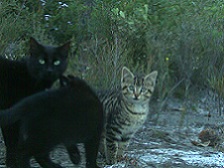
Feral eradication programs are increasingly common on Australian offshore islands; however, planning such eradications is difficult. To aid cat eradication efforts on Kangaroo Island, we examined how feral cat density varies among habitats. Overall, the average density of 0.37 cats km−2 was higher than the mainland average, and densities varied considerably across the island (0.06–3.27 cats km−2), but inconsistently among habitat types. Photograph by Rosemary Hohnen.
WR19181Edge effects created by fenced conservation reserves benefit an invasive mesopredator
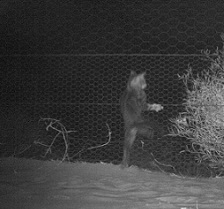
Feral-free fenced reserves are increasingly used as a tool for protecting native wildlife from invasive predators. However, they might also provide an enticing food source for invasive predators such as feral cats. We investigated this edge effect around a fenced reserve in South Australia, and looked at whether cat detection rate, native rodent count in cat stomachs, and cat habitat selection increase closer to the reserve edge. Photograph by Arid Recovery.
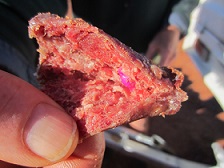
Poison baiting is the only cost-effective management technique currently available that can achieve broad-scale control of feral cats and reduce the serious impact of this invasive species on Australia’s native wildlife. The present study documents the behaviour of feral cats to the para-aminopropiophenone toxin when encapsulated in a pellet. Ninety-five per cent of the cats consuming a pellet died in approximately 3 h after the first signs of toxicoses and a welfare assessment was scored at ‘mild suffering’. Photograph by Michael Johnston.
WR19171 Abstract | WR19171 Full Text | WR19171PDF (327 KB) Open Access Article
WR19216Understanding Australia’s national feral cat control effort
 , Alexander M. Kusmanoff
, Alexander M. Kusmanoff  , Richard Faulkner, Chathuri L. Samarasekara, Ascelin Gordon
, Richard Faulkner, Chathuri L. Samarasekara, Ascelin Gordon  , Alice Johnstone
, Alice Johnstone  , Isaac R. Peterson, Nooshin Torabi
, Isaac R. Peterson, Nooshin Torabi  , Yan Wang
, Yan Wang  and Sarah A. Bekessy
and Sarah A. Bekessy 
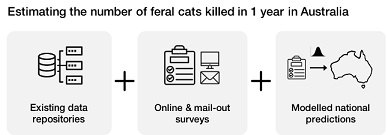
Control of feral cat populations is a critical component of Australia’s threatened species conservation, management and policy; yet, little is known about who is undertaking feral cat control in Australia and why. The present study aimed to understand the extent of the national feral cat control effort, and showed a range of motivations and the significant contribution of individuals to this conservation effort. More information about control methods and their effectiveness is needed to better understand how these efforts are linked to threatened species outcomes. Image by the authors.

Cat hunting by expert Indigenous trackers is an efficient method of strategically removing problem cats from localised areas. The present study documented cat-hunting efforts on the Kiwirrkurra Indigenous protected area over a 5-year period, and showed that fewer cats were detected in areas where cats are hunted. We discuss the potential benefits of maintaining traditional tracking-based hunting activities for conservation of threatened species such as the bilby and great desert skink. Photograph by Rachel Paltridge.
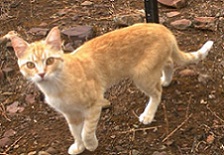
Significant resources have been devoted to the control of foxes and feral cats to recover vulnerable native prey species in Australia. We sought to assess the ecological benefits and consequences of a long-term fox-baiting program in semiarid Australia; finding a decline in foxes is likely to have resulted in the local release of rabbits and an associated increase in cats. Although baiting effectively eliminated foxes, management efforts are needed to control feral cats, which will most likely be achieved through control of rabbits. Photograph provided by Alyson Stobo-Wilson.
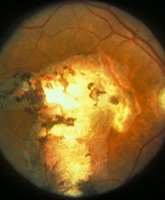
Cats are critical in the lifecycle of five pathogens that affect people or livestock in Australia. We estimate the annual cost of four of these pathogens at AU$6.07 billion (range AU$2.12–10.7 billion). Reducing cat populations and securely containing pet cats could provide substantial benefits to human health and livestock production. Photograph by Community Eye Health CC BY-NC 2.0 FLICKR.
WR19087Are red-tailed phascogales (Phascogale calura) at risk from Eradicat® cat baits?
 , Robert Hill, Brian Macmahon, Louisa Bell, Tim Button, Corey Mosen and Stephanie Hill
, Robert Hill, Brian Macmahon, Louisa Bell, Tim Button, Corey Mosen and Stephanie Hill
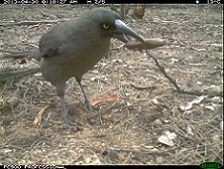
Eradicat® is an effective cat bait containing sodium fluoroacetate (1080) now registered for use in Western Australia. Because this bait is small, soft and moist, it is accessible to small dasyurid marsupials such as the red-tailed phascogale, which could ingest enough bait material to result in poisoning. We distributed rhodamine-laced non-toxic baits in phascogale habitat and found that ingestion of baits was extremely rare. Camera monitoring showed that most baits were taken by Australian ravens and brushtail possums. Nine radio-tagged phascogales all survived through a toxic baiting event, indicating that individuals are at a low risk from an Eradicat® baiting episode. Photograph by J. A. Friend.
WR19217Integrating feral cat (Felis catus) control into landscape-scale introduced predator management to improve conservation prospects for threatened fauna: a case study from the south coast of Western Australia
 , L. Clausen, S. Cowen
, L. Clausen, S. Cowen  , J. Pinder, A. Thomas, A. H. Burbidge, C. Tiller, D. Algar
, J. Pinder, A. Thomas, A. H. Burbidge, C. Tiller, D. Algar  and P. Speldewinde
and P. Speldewinde
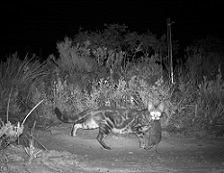
This paper summarises a landscape-scale feral cat and fox baiting program that was delivered across reserves on the south coast of Western Australia that were occupied by the critically endangered western ground parrot (Pezoporus flaviventris) in the early 2000s. Up to 500 000 ha of national parks and natures reserves were baited with Eradicat®. Monitoring was established to evaluate both the efficacy of landscape-scale baiting in managing feral cat populations, and the response of several native fauna species, including the western ground parrot, to an integrated introduced predator control program. Photograph by IFRP Team, DBCA South Coast Region.



